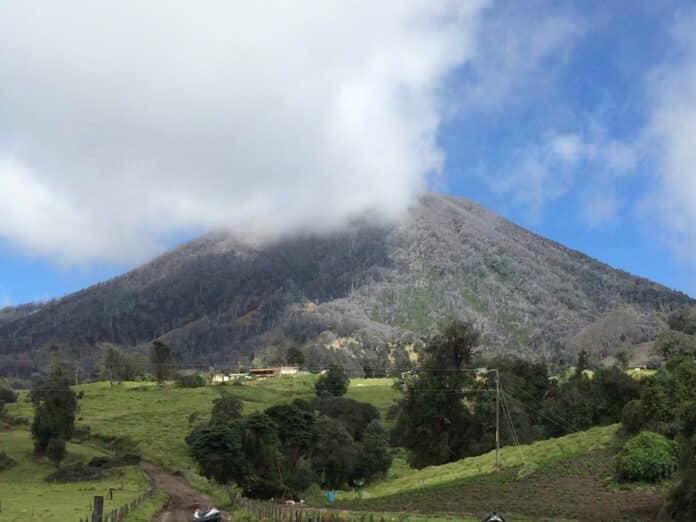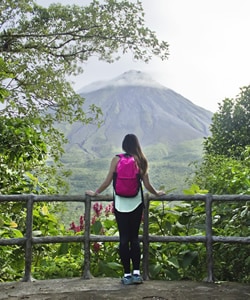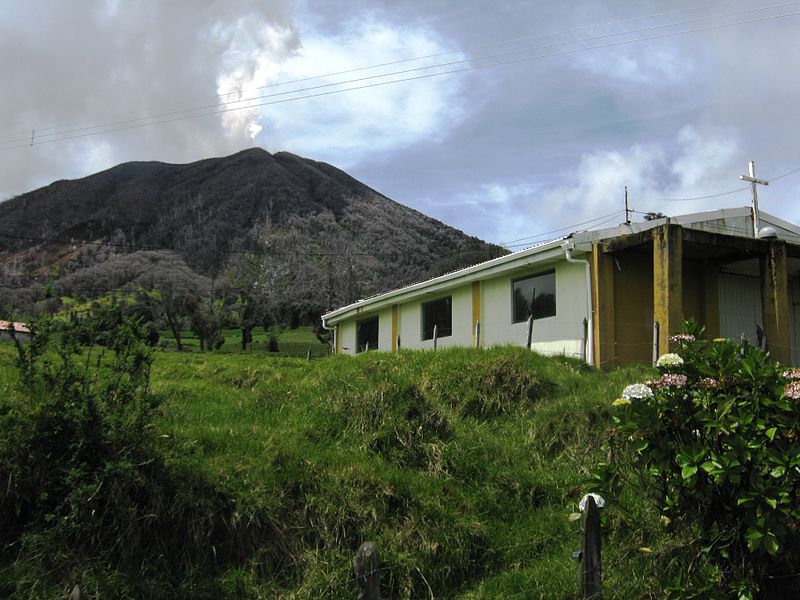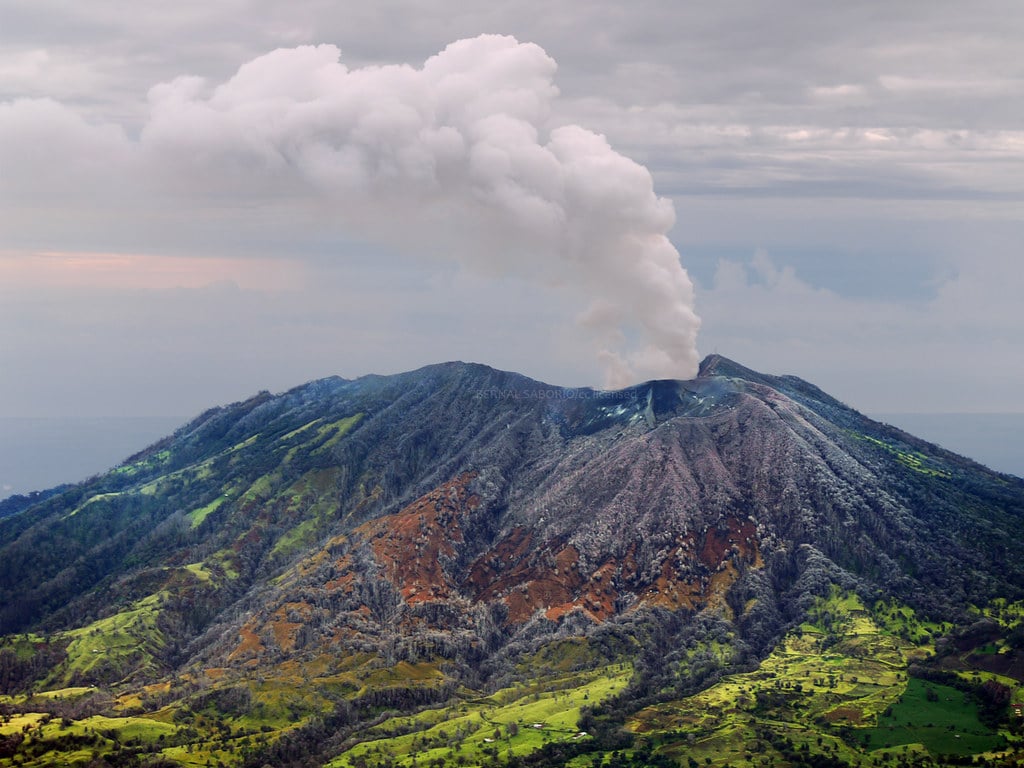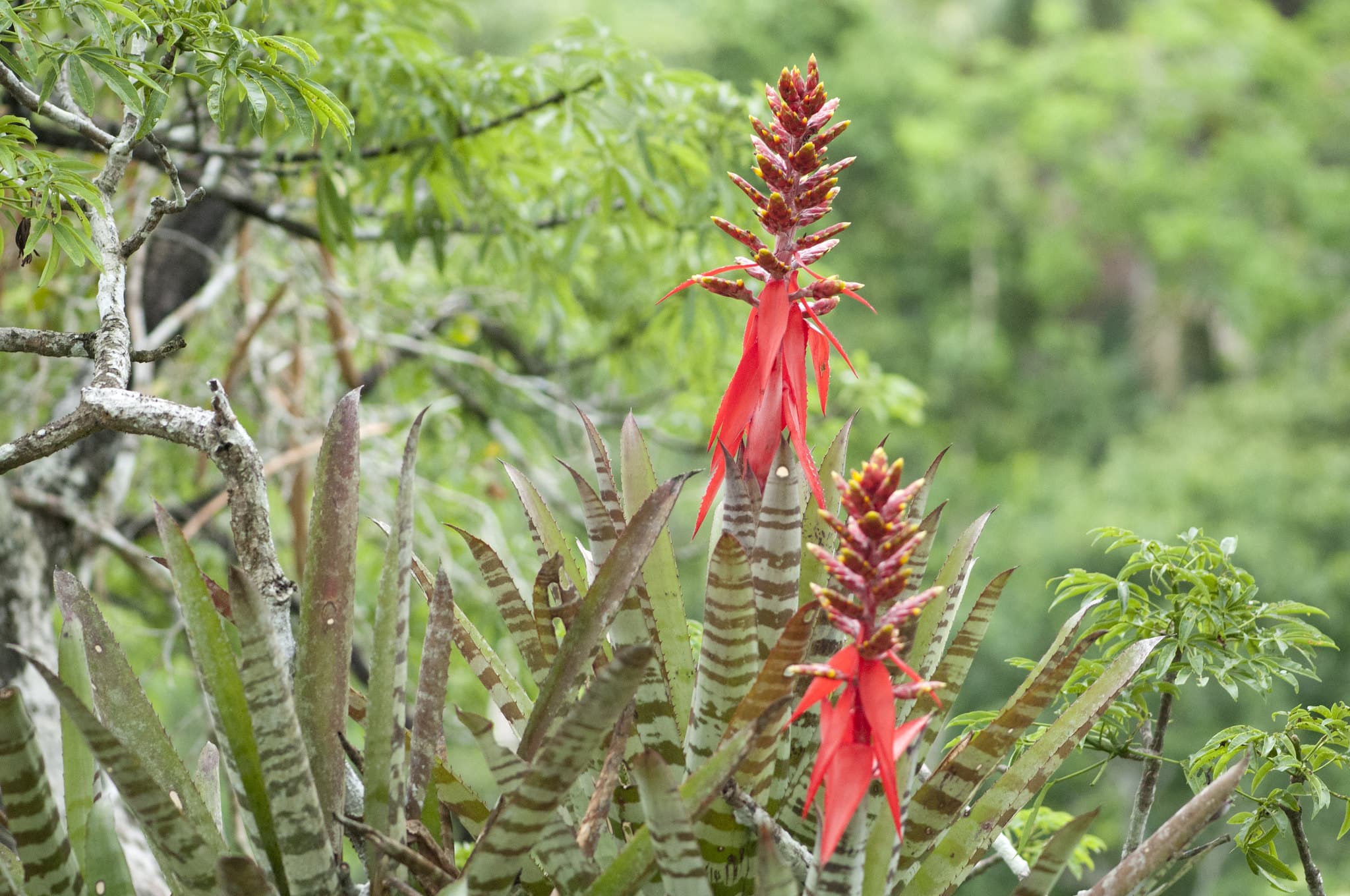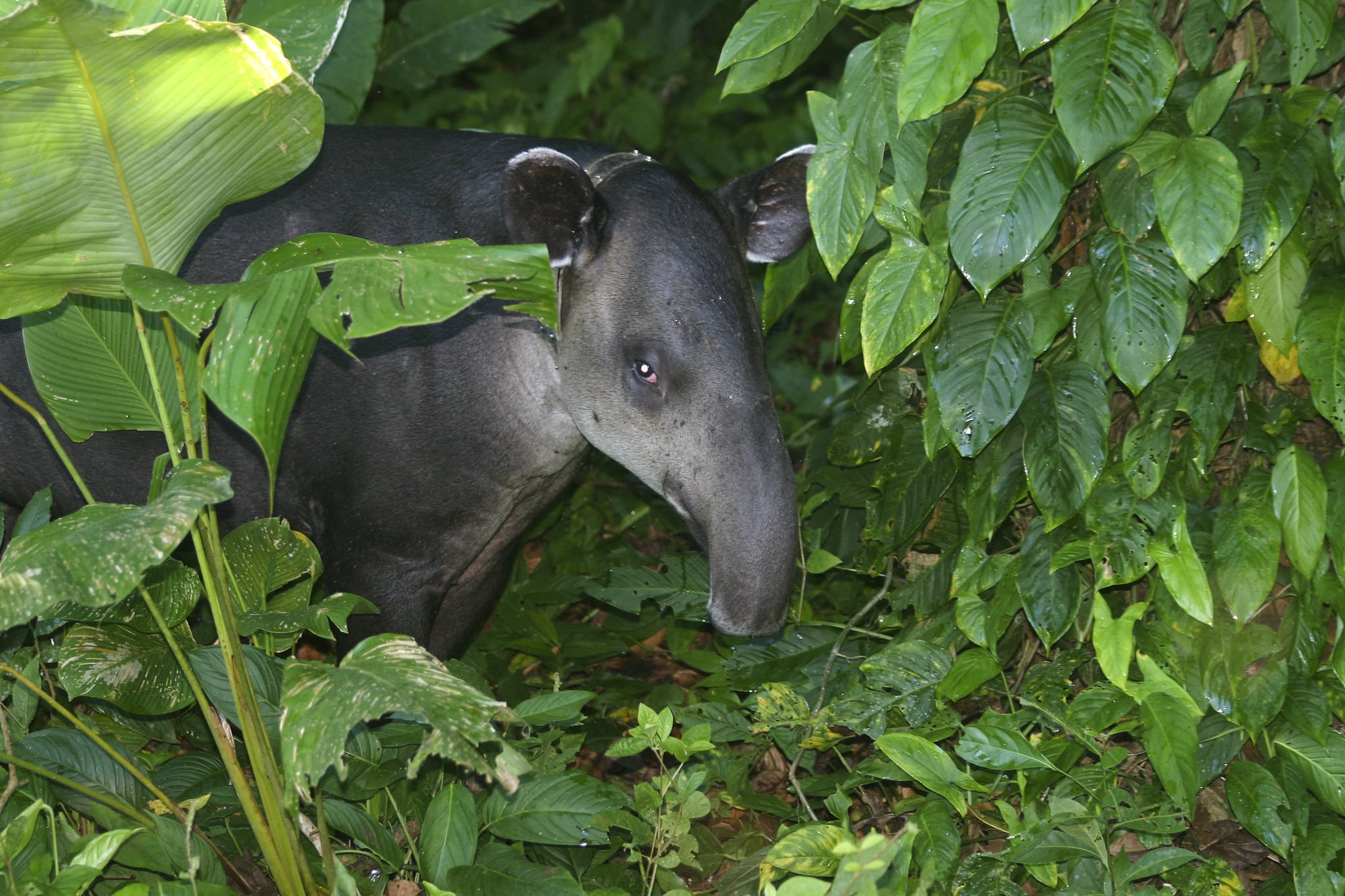Turrialba Volcano National Park is a testament to Costa Rica’s volcanic landscapes’ raw power and breathtaking beauty. This national park is a beacon of natural wonder, inviting adventurers and nature enthusiasts alike to immerse themselves in its mesmerizing scenery and rich biodiversity.
Venturing into Turrialba Volcano National Park is like stepping into a world frozen in time, where dense cloud forests cloak the volcano’s slopes, giving way to lush montane forests and verdant valleys below.
The park’s diverse ecosystems provide a haven for many plant and animal species, many of which are endemic to the region, making it a hotspot for biodiversity and ecological research.
Discover the mysteries of this captivating destination and know why Turrialba Volcano National Park is a must-visit in your Costa Rica vacation all-inclusive.
FREE! Travel eBook to discover Costa Rica!
Grab the eBook with the exhaustive brochure for your Costa Rica Vacation All-Inclusive.
*By clicking send, you agree to receive information about products, services, promotions, or recommendations via email.
History of Turrialba Volcano National Park
Lo que vas a ver en este artículo
- 1 History of Turrialba Volcano National Park
- 2 Turrialba Volcano: Costa Rica’s Active Natural Wonder
- 3 What Key Species do you find in the Turrialba Volcano National Park?
- 3.1 1. The Jewel of the Jungle: The Resplendent Quetzal
- 3.2 2. The Roar of the Canopy: Howler Monkeys in the Wild
- 3.3 3. Ghost of the Rainforest: Tracking the Elusive Jaguar
- 3.4 4. Sleek and Stealthy: The Ocelot in its Natural Habitat
- 3.5 5. Blooms of the Canopy: Exploring Bromeliads and Orchids
- 3.6 6. Gentle Giants of the Forest: The Tapirs of Central America
- 4 Prices and Hours
- 5 The Wonders of Turrialba Volcano National Park
Situated in the Cartago Province of Costa Rica, Turrialba Volcano National Park was established in 1955 to protect the natural treasures of its eponymous volcano and the surrounding landscapes.
The park’s story begins long before its official designation, with the Turrialba Volcano shaping the land and influencing the lives of those in its vicinity. Indigenous peoples, such as the Huetar and Cabecar, revered the volcano as sacred, weaving tales of its power and charisma into their cultural traditions.
As European settlers arrived in the region, the significance of the Turrialba Volcano grew, with explorers and scientists venturing to its slopes to study its volcanic activity and unique ecosystem.
However, it wasn’t until the mid-20th century that efforts were made to formally protect the area as a national park, recognizing its ecological importance and potential for scientific research.
Since its establishment, Turrialba Volcano National Park has served as a beacon of conservation in Costa Rica, safeguarding the volcano itself and the diverse flora and fauna that call its slopes home.
Over the years, the park has faced challenges, including volcanic eruptions, natural disasters, and human encroachment. However, through resilience and adaptive management practices, Turrialba Volcano National Park has persevered, emerging as a symbol of environmental stewardship and sustainable tourism in Costa Rica.
Today, the park continues to welcome visitors worldwide, offering guided tours, hiking trails, and educational programs that showcase the geological marvels and ecological richness of the Turrialba Volcano National Park.
Turrialba Volcano: Costa Rica’s Active Natural Wonder
The Turrialba Volcano, a commanding presence in the Central Volcanic Range of Costa Rica, stands as a formidable symbol of the country’s geological heritage and natural wonders.
Located within the boundaries of the Turrialba Volcano National Park, this stratovolcano has played a central role in shaping the surrounding landscape and captivating the imagination of visitors and scientists alike.
Rising to an elevation of over 10,000 feet, the Turrialba Volcano casts a watchful eye over the lush forests and fertile valleys that sprawl at its base. Its rugged slopes are cloaked in dense vegetation, ranging from verdant cloud forests to sprawling montane ecosystems, each teeming with life and biodiversity.
Within the protected confines of Turrialba Volcano National Park, the volcano serves as a geological marvel and a sanctuary for countless plant and animal species.
Despite its serene appearance, the Turrialba Volcano is no stranger to activity, earning a reputation as one of Costa Rica’s most active volcanoes. Throughout its history, the volcano has exhibited a propensity for eruptions, with notable events recorded as recently as the early 21st century.
These eruptions, while awe-inspiring, also serve as a reminder of the dynamic forces at work beneath the earth’s surface, shaping landscapes and ecosystems in their wake. The Turrialba Volcano presents a unique opportunity for scientists and researchers to study volcanic activity and its impact on the surrounding environment.
Monitoring efforts within Turrialba Volcano National Park provide valuable insights into the volcano’s inner workings, helping to mitigate risks and better understand the complex interactions between volcanic processes and ecological systems.
Despite the inherent risks posed by its volcanic nature, the Turrialba Volcano remains a magnet for adventurers and nature enthusiasts seeking to explore its rugged beauty and discover the mysteries concealed within its cratered depths.
If you want to know more information, visit the official website of the National System of Conservation Areas (SINAC).
What Key Species do you find in the Turrialba Volcano National Park?
In Turrialba Volcano National Park in Costa Rica, you can find a variety of key species, both flora and fauna. Some of the notable species include:
1. The Jewel of the Jungle: The Resplendent Quetzal
The Resplendent Quetzal, scientifically known as Pharomachrus mocinno, is a mesmerizing bird species that holds a special place in the hearts of many. Revered by ancient Mesoamerican civilizations such as the Maya and Aztecs, this stunning creature continues to captivate people with its vibrant plumage and symbolic significance.
Found predominantly in the cloud forests of Central America, particularly in countries like Costa Rica and Guatemala, the Resplendent Quetzal is often associated with mystical qualities and is considered a symbol of freedom and beauty.
One of the prime locations to catch a glimpse of this majestic bird is the Turrialba Volcano National Park in Costa Rica. This national park offers a perfect habitat for the Resplendent Quetzal, with its dense forests and abundance of fruit-bearing trees.
Here, amidst the misty canopies and cascading waterfalls, visitors can witness the Resplendent Quetzal in its natural habitat, a sight that is both awe-inspiring and humbling.
The Turrialba Volcano National Park serves as a sanctuary for the Resplendent Quetzal and a diverse array of flora and fauna. From elusive jaguars to colorful toucans, the park is teeming with life, creating a rich tapestry of biodiversity.
For conservationists and nature enthusiasts alike, the Turrialba Volcano National Park represents hope in the fight to preserve our planet’s natural heritage. Through sustainable practices and community involvement, efforts are underway to protect the delicate ecosystems home to the Resplendent Quetzal and countless other species.
By raising awareness and fostering a deeper appreciation for the wonders of the natural world, initiatives within the park aim to ensure that future generations will continue to marvel at the beauty of creatures like the Resplendent Quetzal.
2. The Roar of the Canopy: Howler Monkeys in the Wild
Howler monkeys, belonging to the genus Alouatta, are iconic inhabitants of the lush forests of Central and South America. Known for their distinctive vocalizations that can be heard echoing through the treetops, these charismatic primates play a vital role in the ecosystems they inhabit.
One of the regions where they thrive is the Turrialba Volcano National Park in Costa Rica, where their presence contributes to the rich biodiversity of this protected area.
Within the dense foliage of the Turrialba Volcano National Park, howler monkeys find an ideal habitat rich in the resources they need to survive. From the towering canopy trees to the dense undergrowth, the park offers ample food sources such as leaves, fruits, and flowers for these arboreal creatures.
Here, amidst the verdant landscape, howler monkeys roam freely, forging social bonds within their troops and asserting dominance through their booming calls.
The Turrialba Volcano National Park provides a sanctuary for howler monkeys and a myriad of other species that call this region home. As integral forest ecosystem components, howler monkeys contribute to seed dispersal, nutrient cycling, and overall forest health.
By consuming fruits and leaves and then dispersing seeds through their feces, these primates play a crucial role in maintaining the balance of the forest ecosystem.
For tourists to the Turrialba Volcano National Park, the opportunity to encounter howler monkeys in their natural habitat is a highlight of any exploration. Whether glimpsed swinging gracefully through the canopy or heard proclaiming their territory with resounding roars, these fascinating creatures never fail to leave a lasting impression.
Their presence serves as a reminder of the importance of preserving natural habitats and protecting the diverse species that inhabit them.
If you want more information about Costa Rica, we invite you to read the next article: Tenorio Volcano National Park: Costa Rica’s Wild Heart.
3. Ghost of the Rainforest: Tracking the Elusive Jaguar
The jaguar, with its powerful build and striking rosette-patterned coat, epitomizes the essence of stealth and strength in the animal kingdom. Found throughout the Americas, from the dense rainforests of the Amazon to the rugged mountains of Central America, this magnificent big cat holds a revered place in indigenous cultures and modern conservation efforts.
Within the borders of Costa Rica lies the Turrialba Volcano National Park, an area where the elusive jaguar prowls amidst the mist-shrouded forests, embodying the untamed spirit of the wilderness.
Turrialba Volcano National Park provides a critical refuge for jaguars, offering vast stretches of pristine habitat where these apex predators can roam freely. Amidst the lush vegetation and rugged terrain, jaguars stalk their prey with unparalleled stealth and grace, their amber eyes scanning the landscape for any sign of movement.
These solitary cats prefer to avoid human presence. However, their presence is felt throughout the park, their tracks serving as silent reminders of their elusive existence.
For visitors fortunate enough to catch a glimpse of these majestic creatures, it is a testament to the park’s success in preserving the natural heritage of Costa Rica and its commitment to conservation.
Conservation efforts within the Turrialba Volcano National Park are focused on protecting the habitats of jaguars and mitigating the threats they face, including habitat loss, poaching, and human-wildlife conflict.
4. Sleek and Stealthy: The Ocelot in its Natural Habitat
The ocelot, known by its scientific name Leopardus pardalis, is a mesmerizing feline species native to the Americas. Characterized by its sleek coat adorned with intricate markings and its piercing eyes, the ocelot exudes an aura of mystery and grace.
While once widely distributed across a range of habitats, including forests, grasslands, and mangroves, ocelot populations have faced significant declines due to habitat loss and fragmentation. However, in protected areas like the Turrialba Volcano National Park in Costa Rica, these elusive cats find a sanctuary to thrive amidst the verdant landscapes.
Within the confines of Turrialba Volcano National Park, the ocelot finds refuge in the dense forests and rugged terrain that characterize the region. Here, amidst the towering trees and cascading streams, these solitary hunters roam in search of prey, relying on their keen senses and stealthy movements to navigate their surroundings.
With their remarkable agility and nocturnal habits, ocelots are well-adapted to the challenges of their environment, blending seamlessly into the shadows as they stalk their quarry.
Encounters with ocelots in the Turrialba Volcano National Park are rare and fleeting, as these elusive cats prefer to avoid human presence. However, their presence is felt throughout the park, and their tracks and occasional sightings serve as reminders of their secretive existence.
This park is a testament to the park’s success in preserving the natural heritage of Costa Rica and its commitment to conservation.
5. Blooms of the Canopy: Exploring Bromeliads and Orchids
Bromeliads and orchids symbolize the rich diversity of plant life in tropical ecosystems with their exquisite beauty and intricate forms. These epiphytic plants play a vital role in the ecosystems they inhabit.
This diversity is more evident than in the Turrialba Volcano National Park in Costa Rica, where lush forests and mist-shrouded mountains provide an ideal habitat for these botanical treasures.
In the canopy of the Turrialba Volcano National Park, bromeliads and orchids thrive in the humid, subtropical climate, their vibrant blooms adding color to the verdant landscape.
With their ability to absorb moisture and nutrients from the air, these plants have adapted to life in the treetops, where they form intricate ecosystems that support a myriad of other organisms. From tiny insects to amphibians and birds, diverse wildlife relies on bromeliads and orchids for shelter, food, and breeding sites.
One of the most remarkable aspects of bromeliads and orchids is their incredible diversity, with thousands of species found worldwide, each uniquely adapted to its specific habitat.
Botanists and nature enthusiasts alike marvel at the sheer variety of bromeliads and orchids that inhabit the park’s forests and cloud-covered slopes. From delicate epiphytic orchids clinging to the branches of trees to terrestrial bromeliads carpeting the forest floor, these plants form an integral part of the park’s intricate web of life.
6. Gentle Giants of the Forest: The Tapirs of Central America
Tapirs, specifically the Baird’s tapir (Tapirus bairdii), are fascinating and enigmatic creatures that inhabit the dense forests of Central and South America. With their unique appearance characterized by a prehensile proboscis-like snout and a stout, barrel-shaped body, tapirs hold a special place in the ecosystems they inhabit.
Within the biodiverse landscapes of Costa Rica, tapirs find sanctuary in protected areas such as the Turrialba Volcano National Park, where they play a crucial role in maintaining the health of the forest ecosystem.
In the rugged terrain of the Turrialba Volcano National Park, tapirs navigate through dense undergrowth and lush vegetation in search of food and shelter. These herbivorous mammals feed on leaves, fruits, and tender shoots, using their sensitive snouts to forage for nutritious vegetation.
These shy and nocturnal creatures tend to avoid human presence. However, their presence is felt throughout the park. Their tracks and occasional sightings are reminders of their importance as keystone species.
These are just a few examples of the rich biodiversity found within Turrialba Volcano National Park, making it a hotspot for nature enthusiasts and researchers alike.
Prices and Hours
During the dry season, which spans from December to April, the park opens its gates from 5:00 a.m. to 10:00 a.m. In contrast, in the rainy season, from May to November, the park’s operating hours are from 6:00 a.m. to 10:00 a.m.
For nationals and residents over 13 years old, the entrance fee is ¢1000, whereas non-residents over 13 years old are charged $12. Residents over 65 are exempted from paying the entrance fee provided they present the Golden Citizen card issued by the CCSS (Caja Costarricense de Seguro Social).
These rates are established to facilitate access to the park while supporting its maintenance and conservation efforts.
The Wonders of Turrialba Volcano National Park
Turrialba Volcano National Park is a natural wonder and a testament to Costa Rica’s commitment to conservation and sustainable tourism.
This park offers visitors a unique opportunity to connect with nature and experience the beauty of Costa Rica’s natural heritage firsthand. Whether hiking along scenic trails, birdwatching amidst the canopy, or simply taking in the panoramic views of the surrounding landscape, there is something for everyone to enjoy in this pristine wilderness.
By preserving these habitats and promoting sustainable tourism practices, Turrialba Volcano National Park ensures that future generations can experience the wonders of Costa Rica’s biodiversity.
Turrialba Volcano National Park is a beacon of conservation and environmental stewardship, inviting visitors to embark on a journey of discovery and appreciation for the natural world.
If you want more information about Costa Rica, we invite you to read the next article: Palo Verde National Park: Protecting Biodiversity.
